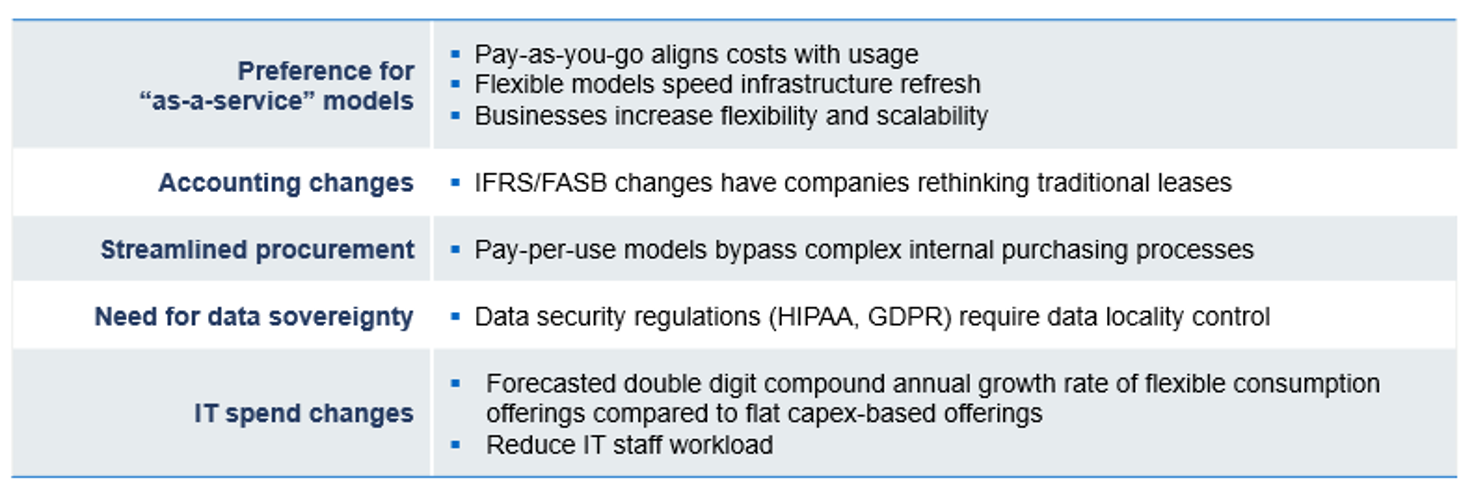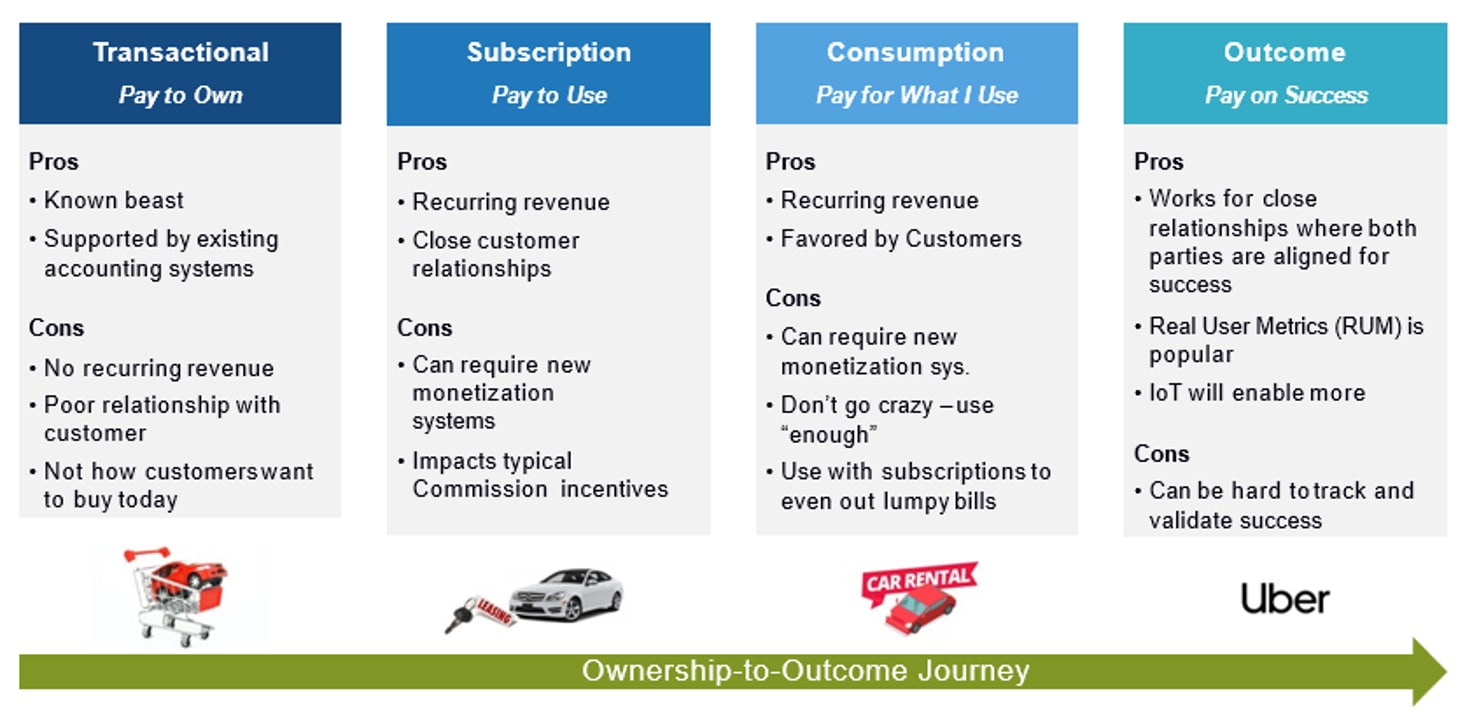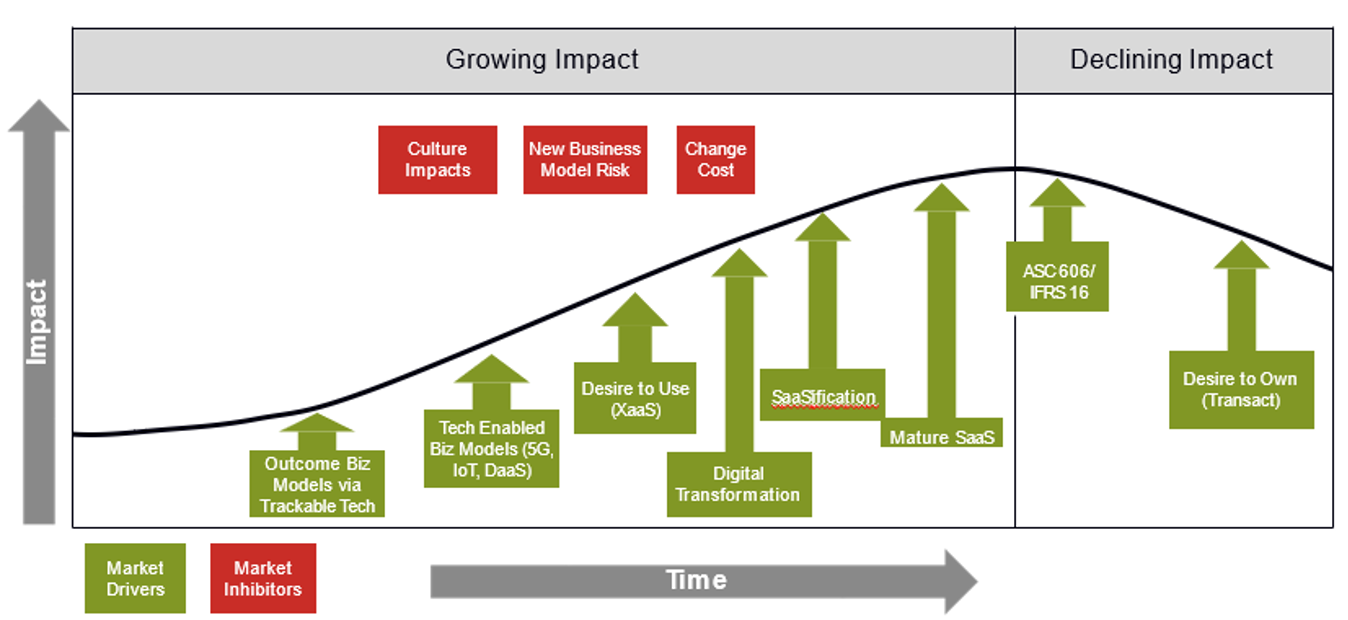Subscription or bust: transforming the hybrid cloud data services industry


Sheila Rohra
Learn more at NetApp INSIGHT 2020 Digital Event, October 26-29
The subscription business model, in which customers pay a recurring price for product or service access, has been around since publishers introduced it in the 17th century. Only in the past decade, however, has it widely captured the attention and imagination of many industries—including tech. Now subscription businesses are growing their revenue nearly 6x faster than the S&P 500, according to Zuora’s latest Subscription Economy Index.Adobe was a software industry trailblazer, moving its creative suite to monthly subscriptions in 2012. Microsoft also made an early shift away from static hardware and on-premises sales—towards a subscription-based cloud model. Now data services and cloud storage companies, including NetApp, are offering powerful subscription services such as NetApp Keystone Flex Subscription.
Today’s desire for subscription-based models is being fueled by accelerated cloud adoption and COVID-19 business impacts and economic uncertainty. Customers are looking for on-premises and cloud alternatives to cash or capex. They want “as-a-service” and “pay-as-you-grow” offerings that provide less upfront commitment, and more flexibility and scalability.
Why customers love subscription-based models
In today’s world, customers want to consume and manage their data differently, in a more cloud-like way. They want to pay only for what they need—when they need it. And they want to free up their IT resources to focus more on innovation and business priorities and less on ongoing storage tasks. In short, they’re looking to bring the cloud to their data center and align economics with business priorities.Here are few things our customers have told us:
- “I need a solution that will meet the performance needs of my workloads. I want to pay for performance, not hardware items.”
- “Pricing can be complex and opaque. I want simple, transparent subscription pricing so I don’t risk unexpected costs.”
- “For one month of the year, we need extra capacity while we run our annual back-up and audit. Flexible capacity allows me to avoid over-provisioning my entire storage array for this short-term need.”
 Customers will continue to look for innovative ways to transform their own businesses through as-a-service models. And organizations that offer more flexible consumption options to these customers will increase their focus on simplification—or streamlining the process with clear metrics about pricing, capacity and services that speed deployment. Advanced analytics and the integration of artificial intelligence (AI) will play an increasingly important role.
Customers will continue to look for innovative ways to transform their own businesses through as-a-service models. And organizations that offer more flexible consumption options to these customers will increase their focus on simplification—or streamlining the process with clear metrics about pricing, capacity and services that speed deployment. Advanced analytics and the integration of artificial intelligence (AI) will play an increasingly important role.
We’re evolving our business model to meet customer needs
Companies like NetApp are working hard to change our business models to provide more flexible options for customers—on a digital transformation path we call the ownership-to-outcome journey. The journey begins with the traditional pay-to-own, transactional model and then progresses to the subscription model. Over time, customers will want to pay only for what they use—via the consumption model. And by the end of the journey, they’ll only want to pay for what they were able to successfully leverage—which is the outcome model.This diagram (source: IDC Directions) outlines the pros and cons at each step of this journey:
 Companies progressing to the subscription model have a lot to gain (recurring revenue is key)—and a lot to offer customers. There will likely be a short-term dip before long-term benefits—but it will be worth the work and the wait. Consider the fact that Apple’s services revenue reached an all-time high of $12.5 billion (nearly 20% of its business) by the end of its fiscal year 2019.
Companies progressing to the subscription model have a lot to gain (recurring revenue is key)—and a lot to offer customers. There will likely be a short-term dip before long-term benefits—but it will be worth the work and the wait. Consider the fact that Apple’s services revenue reached an all-time high of $12.5 billion (nearly 20% of its business) by the end of its fiscal year 2019.
The following diagram, from Zuora Founder and CEO Tien Tzuo’s best-selling book, Subscribed: Why the Subscription Model Will Be Your Company’s Future—and What to Do About It, shows the transformation that needs to take place. First, service providers must change from a static, product-centric business model that relies on various channels to get products and services to customers—to a dynamic, subscription-based business model that revolves around customer service and experience.
 The benefits of the dynamic subscription business model are clear. Customers get more value and an overall better experience. Service providers enjoy better relationships with their customers—which translates into higher, more predictable revenue streams.
The benefits of the dynamic subscription business model are clear. Customers get more value and an overall better experience. Service providers enjoy better relationships with their customers—which translates into higher, more predictable revenue streams.
Benefits to the customer include:
- Ongoing value
- Memorable experiences
- On-demand fulfillment
- Anywhere, real-time access
- Personalized service
- Deeper engagement with customers
- Higher retention rates
- Enhanced opportunities for upselling and cross-selling
- Increased brand loyalty
- Higher revenue streams with more predictability
Business challenges of transforming to a subscription model
The business benefits of moving to the subscription-based model are clear for service providers and customers, but that doesn’t mean it will always be smooth sailing.Changing an organization’s culture and processes can be more difficult than changing its technology. Most accounting, billing and payment systems were built before the idea of the digital subscription economy even came along. And in some cases, there’s a lack of executive buy-in to change.
The diagram below (source: IDC Directions) shows market trends and their impact on an organization’s move toward subscription. You can see there are plenty of market drivers (green in the diagram) propelling us towards subscription models—including outcome and tech-enabled business models, desire to use, digital experience, “SaaSification” and desire to own. In red you can see the market inhibitors, which include culture impacts, new business model risk and change cost.
 At the end of the day, the pros far outweigh the cons. This is a journey we need to take as an industry to serve our customers.
At the end of the day, the pros far outweigh the cons. This is a journey we need to take as an industry to serve our customers.
Subscription-based models are in high demand—and they represent the future of business. Organizations who adapt and innovate quickly—on both the service provider and customer side—will be more successful than those who resist change and lag behind.
If you’re interested in learning more about successful subscription business models, I recommend Zuora’s 9 Keys to Building Successful Subscription Business Models.
Attend NetApp INSIGHT to learn more about our subscription services
NetApp offers powerful subscription-based services—and we’re continuing to innovate in this area to ensure our customers’ success in today’s cloud environment and economic climate. We have some exciting announcements to share at our technical training and education conference, which will be digital and FREE for the first time. It’s called the NetApp INSIGHT 2020 Digital Event, and it will be held from October 26-29.At NetApp INSIGHT, we’ll feature key enhancements to NetApp Keystone Flex Subscription—a flexible, pay-as-you-grow subscription-based service that brings a cloud-like experience on your premises, with an outcome-based service option if you prefer opex to capex or leasing. It enables you to accelerate time to value by removing the IT burden of managing resources and going through the lengthy procurement cycle. In short, you can better align economics to your business priorities. Three must-attend INSIGHT sessions include:
- SPD-1083-1: Stay Diligent, Be Recession-Ready and Acquisition-Resilient: An Introduction to NetApp Keystone
- BRK-1172-2: NetApp Keystone: Flexible On-Premises Alternatives to Cash: A Deep Dive into NetApp Keystone Flex Subscription
- SPD-1180-3: NetApp Service Engine: The Integrated Monitoring Platform for NetApp Keystone: A Technical Demo
Please join us at NetApp INSIGHT to explore all the ways NetApp can help you unlock the best of cloud, on-prem and everything in between. Learn more and register today!
Sheila Rohra
Sheila Rohra, Senior Vice President for Worldwide Services & Support, NetApp, leads a $2B+ business providing strategic services and customer support to some of the largest companies in the world. She and her team are responsible for the customer’s experience—from the sale of strategic, differentiated services to the delivery of award-winning support. During the past year, Sheila’s team has introduced new consumption-based models, including subscription and flat, predictable, flexible pricing, to the NetApp portfolio. As Chief Transformation Officer for NetApp in 2015, Sheila led the first phase of an ongoing initiative that reduced spending by $400M and improved the company’s operating margins from 7% to more than 20% in just three years.
